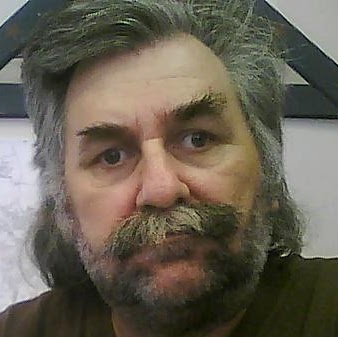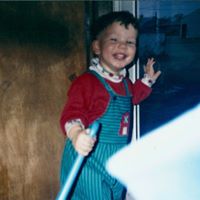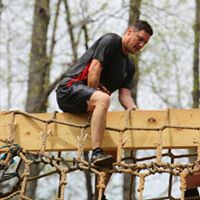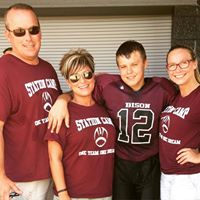Perry R Cook
age ~70
from Jacksonville, OR
- Also known as:
-
- Perry Raymond Cook
- Perry Elizabeth Cook
- Raymond Cook Perry
- Phone and address:
-
1004 Humbug Creek Rd, Applegate, OR 97530
(541)8460698
Perry Cook Phones & Addresses
- 1004 Humbug Creek Rd, Jacksonville, OR 97530 • (541)8460698
- Applegate, OR
- Walnut Creek, CA
- 78 Dempsey Ave, Princeton Township, NJ 08540 • (609)2791568
- 87 Longview Dr, Princeton Township, NJ 08540 • (609)2791568
- 66 Stanworth Dr, Princeton, NJ 08540 • (609)2791568
- 1095 Middlefield Rd, Palo Alto, CA 94301 • (415)3249437
- Kansas City, MO
- 87 Longview Dr, Princeton, NJ 08540 • (609)7443686
Work
-
Position:Administrative Support Occupations, Including Clerical Occupations
Education
-
Degree:Associate degree or higher
Emails
Wikipedia References

Perry R. Cook
Name / Title
Company / Classification
Phones & Addresses
Holly Nance Property Solutions
Real Estate Agents · Remodeling
Real Estate Agents · Remodeling
832 S Broad St, Trenton, NJ 08611
(609)3065292
(609)3065292
President
United States Sign Council
Nonprofit Organization Management · Business Association · Business Associations
Nonprofit Organization Management · Business Association · Business Associations
211 Radcliffe St, Bristol, PA 19007
(215)7851922, (215)7888395
(215)7851922, (215)7888395
Us Patents
-
System And Method For Capture And Rendering Of Performance On Synthetic Musical Instrument
view source -
US Patent:8222507, Jul 17, 2012
-
Filed:Nov 4, 2009
-
Appl. No.:12/612500
-
Inventors:Spencer Salazar - San Francisco CA, US
Ge Wang - Palo Alto CA, US
Perry Cook - Applegate OR, US -
Assignee:Smule, Inc. - Palo Alto CA
-
International Classification:G10H 7/00
-
US Classification:84602
-
Abstract:Techniques have been developed for capturing and rendering musical performances on handheld or other portable devices using signal processing techniques suitable given the somewhat limited capabilities of such devices and in ways that facilitate efficient encoding and communication of such captured performances via wireless networks. The developed techniques facilitate the capture, encoding and use of gesture streams for rendering of a musical performance. In some embodiments, a gesture stream encoding facilitates audible rendering of the musical performance locally on the portable device on which the musical performance is captured, typically in real time. In some embodiments, a gesture stream efficiently codes the musical performance for transmission from the portable device on which the musical performance is captured to (or toward) a remote device on which the musical performance is (or can be) rendered. Indeed, is some embodiments, a gesture stream so captured and encoded may be rendered both locally and on remote devices using substantially identical or equivalent instances of a digital synthesis of the musical instrument executing on the local and remote devices.
-
System And Method For Communication Between Mobile Devices Using Digital/Acoustic Techniques
view source -
US Patent:20100053169, Mar 4, 2010
-
Filed:Sep 3, 2009
-
Appl. No.:12/553788
-
Inventors:Perry R. Cook - Applegate OR, US
-
International Classification:G09G 5/22
G06F 17/00
H04B 7/00
G10L 21/00 -
US Classification:3454401, 700 94, 455 412, 704500, 704E21001
-
Abstract:Techniques have been developed for transmitting and receiving information conveyed through the air from one portable device to another as a generally unperceivable coding within an otherwise recognizable acoustic signal. For example, in some embodiments in accordance with the present invention(s), information is acoustically communicated from a first handheld device toward a second by encoding the information in a signal that, when converted into acoustic energy at an acoustic transducer of the first handheld device, is characterized in that the acoustic energy is discernable to a human ear yet the encoding of the information therein is generally not perceivable by the human. The acoustic energy is transmitted from the acoustic transducer of the first handheld device toward the second handheld device across an air gap that constitutes a substantially entirety of the distance between the devices. Acoustic energy received at the second handheld device may then be processed using signal processing techniques tailored to detection of the particular information encodings employed.
-
Continuous Pitch-Corrected Vocal Capture Device Cooperative With Content Server For Backing Track Mix
view source -
US Patent:20110144981, Jun 16, 2011
-
Filed:Sep 4, 2010
-
Appl. No.:12/876131
-
Inventors:Spencer Salazar - Palo Alto CA, US
Rebecca A. Fiebrink - Timmins, CA
Ge Wang - Palo Alto CA, US
Mattias Ljungström - Berlin, DE
Jeffrey C. Smith - Atherton CA, US
Perry R. Cook - Applegate OR, US -
International Classification:G10L 11/04
-
US Classification:704207, 704E11006
-
Abstract:Techniques have been developed to facilitate (1) the capture and pitch correction of vocal performances on handheld or other portable computing devices and (2) the mixing of such pitch-corrected vocal performances with backing tracks for audible rendering on targets that include such portable computing devices and as well as desktops, workstations, gaming stations, even telephony targets. Implementations of the described techniques employ signal processing techniques and allocations of system functionality that are suitable given the generally limited capabilities of such handheld or portable computing devices and that facilitate efficient encoding and communication of the pitch-corrected vocal performances (or precursors or derivatives thereof) via wireless and/or wired bandwidth-limited networks for rendering on portable computing devices or other targets.
-
Continuous Score-Coded Pitch Correction
view source -
US Patent:20110144982, Jun 16, 2011
-
Filed:Sep 4, 2010
-
Appl. No.:12/876132
-
Inventors:Spencer Salazar - Palo Alto CA, US
Rebecca A. Fiebrink - Timmins, CA
Ge Wang - Palo Alto CA, US
Mattias Ljungström - Berlin, DE
Jeffrey C. Smith - Atherton CA, US
Perry R. Cook - Applegate OR, US -
International Classification:G10L 11/04
-
US Classification:704207, 704E11006
-
Abstract:Vocal musical performances may be captured and continuously pitch-corrected at a mobile device for mixing and rendering with backing tracks in ways that create compelling user experiences. In some cases, the vocal performances of individual users are captured in the context of a karaoke-style presentation of lyrics in correspondence with audible renderings of a backing track. Such performances can be pitch-corrected in real-time at the mobile device in accord with pitch correction settings. In some cases, such pitch correction settings code a particular key or scale for the vocal performance or for portions thereof. In some cases, pitch correction settings include a score-coded melody sequence of note targets supplied with, or for association with, the lyrics and/or backing track. In some cases, pitch correction settings are dynamically variable based on gestures captured at a user interface.
-
Pitch-Correction Of Vocal Performance In Accord With Score-Coded Harmonies
view source -
US Patent:20110251840, Oct 13, 2011
-
Filed:Apr 12, 2011
-
Appl. No.:13/085413
-
Inventors:Perry R. Cook - Applegate OR, US
Ari Lazier - San Francisco CA, US
Tom Lieber - San Francisco CA, US
Turner E. Kirk - Mountain View CA, US -
International Classification:G10L 11/04
-
US Classification:704207, 704E11006
-
Abstract:Despite many practical limitations imposed by mobile device platforms and application execution environments, vocal musical performances may be captured and continuously pitch-corrected for mixing and rendering with backing tracks in ways that create compelling user experiences. In some cases, the vocal performances of individual users are captured on mobile devices in the context of a karaoke-style presentation of lyrics in correspondence with audible renderings of a backing track. Such performances can be pitch-corrected in real-time at a portable computing device (such as a mobile phone, personal digital assistant, laptop computer, notebook computer, pad-type computer or netbook) in accord with pitch correction settings. In some cases, pitch correction settings include a score-coded melody and/or harmonies supplied with, or for association with, the lyrics and backing tracks. Harmonies notes or chords may be coded as explicit targets or relative to the score coded melody or even actual pitches sounded by a vocalist, if desired.
-
Coordinating And Mixing Vocals Captured From Geographically Distributed Performers
view source -
US Patent:20110251841, Oct 13, 2011
-
Filed:Apr 12, 2011
-
Appl. No.:13/085414
-
Inventors:Perry R. Cook - Applegate OR, US
Ari Lazier - San Francisco CA, US
Tom Lieber - San Francisco CA, US
Turner E. Kirk - Mountain View CA, US -
International Classification:G10L 11/04
-
US Classification:704207, 704E11006
-
Abstract:Despite many practical limitations imposed by mobile device platforms and application execution environments, vocal musical performances may be captured and continuously pitch-corrected for mixing and rendering with backing tracks in ways that create compelling user experiences. Based on the techniques described herein, even mere amateurs are encouraged to share with friends and family or to collaborate and contribute vocal performances as part of virtual “glee clubs.” In some implementations, these interactions are facilitated through social network- and/or eMail-mediated sharing of performances and invitations to join in a group performance. Using uploaded vocals captured at clients such as a mobile device, a content server (or service) can mediate such virtual glee clubs by manipulating and mixing the uploaded vocal performances of multiple contributing vocalists.
-
Computational Techniques For Continuous Pitch Correction And Harmony Generation
view source -
US Patent:20110251842, Oct 13, 2011
-
Filed:Apr 12, 2011
-
Appl. No.:13/085415
-
Inventors:Perry R. Cook - Applegate OR, US
Ari Lazier - San Francisco CA, US
Tom Lieber - San Francisco CA, US -
International Classification:G10L 11/04
-
US Classification:704207, 704E11006
-
Abstract:Using signal processing techniques described herein, pitch detection and correction of a user's vocal performance can be performed continuously and in real-time with respect to the audible rendering of the backing track at the handheld or portable computing device. In some implementations, pitch detection builds on time-domain pitch correction techniques that employ average magnitude difference function (AMDF) or autocorrelation-based techniques together with zero-crossing and/or peak picking techniques to identify differences between pitch of a captured vocal signal and score-coded target pitches. Based on detected differences, pitch correction based on pitch synchronous overlapped add (PSOLA) and/or linear predictive coding (LPC) techniques allow captured vocals to be pitch shifted in real-time to “correct” notes in accord with pitch correction settings that code score-coded melody targets and harmonies.
-
Automatic Conversion Of Speech Into Song, Rap, Or Other Audible Expression Having Target Meter Or Rhythm
view source -
US Patent:20130339035, Dec 19, 2013
-
Filed:Jun 5, 2013
-
Appl. No.:13/910949
-
Inventors:Mark Godfrey - Atlanta GA, US
Alexander Rae - Atlanta GA, US
Prerna Gupta - Los Altos Hills CA, US
Perry R. Cook - Jacksonville OR, US -
International Classification:G10L 19/00
-
US Classification:704500
-
Abstract:Captured vocals may be automatically transformed using advanced digital signal processing techniques that provide captivating applications, and even purpose-built devices, in which mere novice user-musicians may generate, audibly render and share musical performances. In some cases, the automated transformations allow spoken vocals to be segmented, arranged, temporally aligned with a target rhythm, meter or accompanying backing tracks and pitch corrected in accord with a score or note sequence. Speech-to-song music applications are one such example. In some cases, spoken vocals may be transformed in accord with musical genres such as rap using automated segmentation and temporal alignment techniques, often without pitch correction. Such applications, which may employ different signal processing and different automated transformations, may nonetheless be understood as speech-to-rap variations on the theme.
Medicine Doctors

Perry Cook
view sourceSpecialties:
Hematology/Oncology
Work:
New York Methodist Hospital Park Slope Infusion Center
343 4 Ave, Brooklyn, NY 11215
(718)4992169 (phone), (718)4993218 (fax)
New York Methodist Hospital Hematology Oncology
501 6 St APT 3C, Brooklyn, NY 11215
(718)7805541 (phone), (718)7805545 (fax)
343 4 Ave, Brooklyn, NY 11215
(718)4992169 (phone), (718)4993218 (fax)
New York Methodist Hospital Hematology Oncology
501 6 St APT 3C, Brooklyn, NY 11215
(718)7805541 (phone), (718)7805545 (fax)
Education:
Medical School
University of Iowa Carver College of Medicine
Graduated: 1977
University of Iowa Carver College of Medicine
Graduated: 1977
Procedures:
Bone Marrow Biopsy
Bone Marrow or Stem Cell Transplant
Bone Marrow or Stem Cell Transplant
Conditions:
Sickle-Cell Disease
Anemia
Hemolytic Anemia
Hodgkin's Lymphoma
Iron Deficiency Anemia
Anemia
Hemolytic Anemia
Hodgkin's Lymphoma
Iron Deficiency Anemia
Languages:
English
Spanish
Spanish
Description:
Dr. Cook graduated from the University of Iowa Carver College of Medicine in 1977. He works in Brooklyn, NY and 1 other location and specializes in Hematology/Oncology. Dr. Cook is affiliated with New York Methodist Hospital.

Perry F. Cook
view sourceSpecialties:
Diagnostic Radiology, Radiology
Work:
Wind River Radiology PC
1320 Bishop Randall Dr, Lander, WY 82520
(307)3356451 (phone), (307)3324276 (fax)
1320 Bishop Randall Dr, Lander, WY 82520
(307)3356451 (phone), (307)3324276 (fax)
Education:
Medical School
Duke University School of Medicine
Graduated: 1988
Duke University School of Medicine
Graduated: 1988
Languages:
English
Description:
Dr. Cook graduated from the Duke University School of Medicine in 1988. She works in Lander, WY and specializes in Diagnostic Radiology and Radiology. Dr. Cook is affiliated with SageWest Health Care Lander.
Resumes

Permanent Visiting Artist And Lecturer
view sourceLocation:
78 Dempsey Ave, Princeton, NJ 08540
Industry:
Research
Work:
Princeton University Jan 1, 1996 - 2010
Professor Emeritus of Computer Science
California Institute of the Arts Jan 1, 1996 - 2010
Permanent Visiting Artist and Lecturer
Smule, Inc. Jan 1, 1996 - 2010
Ip Strategist
Humbug Sonic Arts Jan 1, 1996 - 2010
Founder, Creative Director
Media Vision 1989 - 1995
Consultant, Then Senior Research Scientist, Then Consultant
Professor Emeritus of Computer Science
California Institute of the Arts Jan 1, 1996 - 2010
Permanent Visiting Artist and Lecturer
Smule, Inc. Jan 1, 1996 - 2010
Ip Strategist
Humbug Sonic Arts Jan 1, 1996 - 2010
Founder, Creative Director
Media Vision 1989 - 1995
Consultant, Then Senior Research Scientist, Then Consultant
Education:
Stanford University 1986 - 1990
Doctorates, Doctor of Philosophy, Electrical Engineering, Music University of Missouri - Kansas City 1982 - 1986
Bachelors, Bachelor of Science, Electrical Engineering University of Missouri - Kansas City 1973 - 1985
Bachelors, Bachelor of Arts, Music Blue Springs Senior High
Doctorates, Doctor of Philosophy, Electrical Engineering, Music University of Missouri - Kansas City 1982 - 1986
Bachelors, Bachelor of Science, Electrical Engineering University of Missouri - Kansas City 1973 - 1985
Bachelors, Bachelor of Arts, Music Blue Springs Senior High
Skills:
Sound
Sound Design
Audio Processing
Human Computer Interaction
Programming
Composition
Music
Acoustics
User Interface Design
Sound Design
Audio Processing
Human Computer Interaction
Programming
Composition
Music
Acoustics
User Interface Design

Perry Cook
view source
Perry Cook
view source
Perry Cook
view source
Perry Cook
view source
Perry Cook
view source
Perry Cook
view sourceIsbn (Books And Publications)

Music, Cognition, and Computerized Sound: An Introduction to Psychoacoustics
view sourceAuthor
Perry R. Cook
ISBN #
0262032562
Flickr
Myspace
Googleplus

Perry Cook

Perry Cook

Perry Cook

Perry Cook
Youtube

Perry Cook
view source
Perry Cook
view source
Perry Cook
view source
Barbara Perry Cook
view source
Lisa Perry Cook
view source
Perry Cook
view source
Perry Cook
view source
Rhda Perry Cook
view sourceClassmates

Perry Cook
view sourceSchools:
Schwenksville High School Schwenksville PA 1953-1957
Community:
Mary Fryer, Mae Heffentrager, David Loughery, William Clossin, Kerry Wilson

Perry Cook
view sourceSchools:
Lansing Central High School Lansing NY 1990-1994

Perry Cook
view sourceSchools:
Hopewell Valley Central High School Pennington NJ 1998-2002
Community:
Ericka Feller, Christopher Zsenak, Megan Santosusso, Ashley Hagen, Abigail Stewart, Holl Murphy, Tristen Bryant, Morgan Sayre, Joseph Pellegrino

Perry Cook
view sourceSchools:
Trego Community High School Wakeeney KS 1971-1975
Community:
Kirk Schwien, Cindy Fabricius, Robin Dice, Tina Waldschmidt, Dave Roberts, Ed Stefan, Mark Denchfield, Linda Beaman, Tracy Ries, Linda Lorenz

Dexter High School, Dexte...
view sourceGraduates:
Perry Cook (1973-1977),
Jerry McMenamin (1955-1959),
Joyce Hogan (1970-1981),
Nancy Lawhead (1964-1968)
Jerry McMenamin (1955-1959),
Joyce Hogan (1970-1981),
Nancy Lawhead (1964-1968)
Get Report for Perry R Cook from Jacksonville, OR, age ~70


















